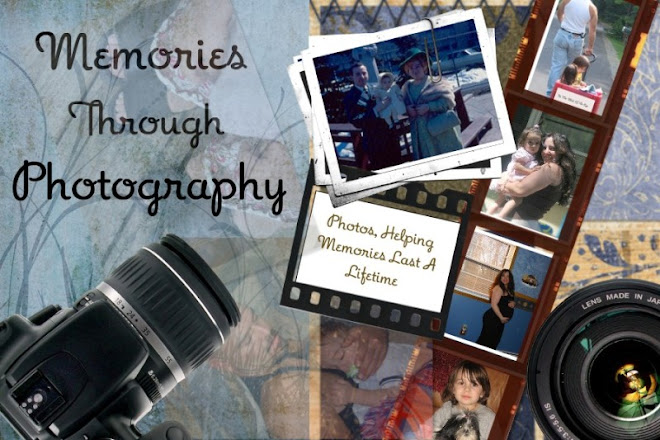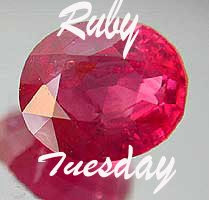Since receiving my new camera for Christmas, I am very interested in learning about Shutter speeds and aperture. I don't know anything about photography. I have a vision and I try to capture the feeling I get from the vision in each picture. Other than that everything else may as well be written in another laugage.
My go to site for photo information is DPS (Digital Photography School). I subscribe to their newsletter and look forward to each one.
Here is a article from the last newsletter.
As you increase the size of your aperture (make the hole that you shoot through bigger) you let more light into your image sensor. As a result you will need a shorter shutter speed. In the opposite way if you increase the length of time your shutter is open you decrease the necessary aperture that you’ll need to get a well exposed shot.
Priority Modes
Aperture and Shutter Priority modes are really semi-manual (or semi-automatic) modes. They give you some control over your settings but also ensure you have a well exposed image by the camera making some of the decisions on settings. Let me explain each separately:
Aperture Priority Mode
(often it has a symbol of ‘A’ or Av’ to indicate it’s selected)
In this mode you as the photographer sets the aperture that you wish to use and the camera makes a decision about what shutter speed is appropriate in the conditions that you’re shooting in.
DofPhoto by carpe icthus
When would you use Aperture Priority Mode? - if you remember our tutorial on aperture you’ll see how the main impact that aperture had on images was with regards to Depth of Field (DOF). As a result most people use Aperture Priority Mode when they are attempting to have some control in this area. If they want a shallow DOF (for example in the shot to the right which has the flower in focus but the background nice and blurred) they’ll select a large aperture (for example f/1.4 - as in the example to the right) and let the camera choose an appropriate shutter speed. If they wanted an image with everything in focus they’d pick a smaller aperture (for example f/22) and let the camera choose an appropriate shutter speed (generally a longer one).
When choosing an Aperture keep in mind that the camera will be choosing faster or longer shutter speeds and that there comes a point where shutter speeds get too long to continue to hand hold your camera (usually around 1/60). Once you get much slower than this level you’ll need to consider using a tripod. Also if you’re photographing a moving subject your shutter speed will impact how it’s captured and a slow shutter speed will mean your subject will be blurred).
Shutter Priority Mode
(often has a symbol of Tv or S)
In this mode you as the photographer choose the shutter speed that you wish to shoot at and let the camera make a decision about what aperture to select to give a well exposed shot.
When would you use Shutter Priority Mode? - in our tutorial on shutter speed we talked about how the main impact of different shutter speeds was how ‘movement’ would be captured in your images. As a result most people switch to shutter priority mode when they want more control over how to photograph a moving subject.
For example if they want to photograph a racing car but want to completely freeze it so there is no motion blur they’d choose a fast shutter speed (say at 1/2000 like in the first shot below) and the camera would take into consideration how much light there was available and set an appropriate aperture. If instead you wanted to photograph the car but have some motion blur to illustrate how fast the car is moving you might like to choose a slower shutter speed (like the second shot below which has a shutter speed of 1/125) and the camera would choose a smaller aperture as a result.
Keep in mind that as the camera chooses different apertures it will impact the Depth of Field in your image. This means if you choose a fast shutter speed to freeze your fast moving object that it’ll have a narrower DOF.
Practice
As you can see - Shutter and Aperture Priority modes do give you more control over your images but they do take a little practice to get used to.
As you use them you need to not only think about the setting that YOU set but also keep an eye on the setting that the camera selects for you.
I find that when shooting in Av or Tv modes that it’s often best to bracket your shots and shoot a number of images of the same subject (where you have time) at different settings. This will ensure that you’re likely to get at least one shot which meets your need.
The best way to learn about Shutter priority and Aperture Priority modes is to grab your camera, to head out with it and to experiment. Switch to Av or Tv and start playing with the different settings (taking lots of shots as you go). Particularly watch how the camera makes changes to compensate for your selections and what impact it has upon the shots that you take.
In Aperture Priority Mode take some shots at the largest aperture you can (small numbers) and see how it blurs the background (but also increases the shutter speed) and then head to the other end of the spectrum to take some shots at the smallest aperture you can (large numbers) to see how it keeps more of your image in focus.
In Shutter Priority Mode play with fast and slow shutter speeds and see how that impacts DOF.
Don’t be frustrated if your initial shots are not what you’d expect - it takes practice to get your head around these modes. But keep in mind that when you do master them you’ll have a lot more creative control over your shots. It’s really worth learning this.
DPS is full of interesting information on photography and is written for people like me, with limited knowledge.
[source]
Welcome to My Photography Blog
Subscribe to:
Post Comments (Atom)









.jpg)












1 comment:
I'm loving your blog! I'm an amateur (sometimes but very rarely professional) photographer and I've learned some stuff here. Enjoy it!
Post a Comment